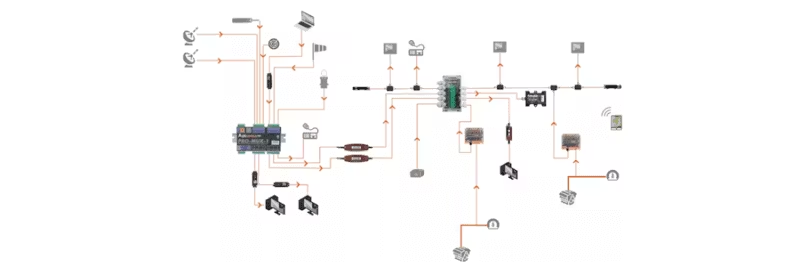Cart
Discount: 0.00 EUR
Discount: 0.00 EUR
Digital Skipper |6/11, 2022

Large and complex networks can feel daunting, both for installers and boat owners trying to do parts of the work themselves. This guide provides practical tips and best practices for effectively managing extensive NMEA 2000 and NMEA 0183 networks.
The most important part of the process is the planning stage. When installing a new network or adding equipment to an existing system, you must ensure that your idea is feasible. Careful planning of network topology, cabling, and power supply makes managing a complex network much easier.
In small installations, this is rarely a problem, but in larger systems, voltage drop and power consumption are critical factors. Calculations must be made to avoid operational disturbances. Read more about how to calculate voltage drop here: Voltage Drop Guide.
Large networks contain many devices, cables, and connections. This cannot be kept in mind – and another installer needs clear documentation to understand your installation. A complete network diagram with device placement, cabling, and connections makes maintenance and future expansion much easier.
See examples of network diagrams from Actisense.
Install devices and cables so they are easy to inspect, replace, or repair. Cables should be hidden but still accessible when needed. This saves time and costs for future service.
Although NMEA 2000 cables are relatively easy to manage, NMEA 0183 installations can become a nightmare if cables are not organized. Keep cables neatly bundled and use cable channels where possible for a clean and easily serviceable installation.
To gain full control over your network, gateway devices that provide real-time data are recommended:
NGT-1-USB transfers all NMEA 2000 data to a PC application. You can see connected devices, power status, SRC addresses, and Manufacturer information – perfect for troubleshooting and network monitoring.
USG-2 acts as a USB-to-serial gateway for NMEA 0183. To monitor multiple data streams, a multiplexer like NDC-5 is used.
W2K-1 Wireless Gateway connects to the NMEA 2000 network and logs data to an SD card. It can also output data wirelessly in various formats, such as NMEA 0183, for apps like Navionics or OpenCPN.
With the new Actisense-i diagnostic function, the W2K-1 can display network parameters in real-time. Thanks to the ability to connect to another network as a client, you can monitor your vessel remotely via Wi-Fi or 4G/5G.